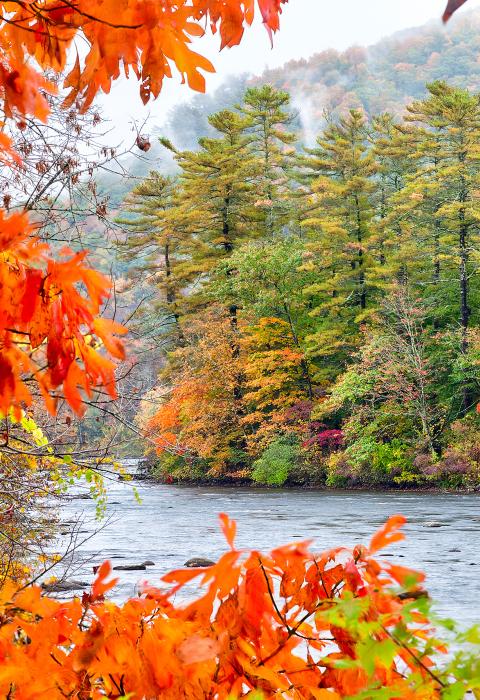Housatonic River
Connecticut
The Housatonic River Basin lies principally in western Connecticut and southwestern Massachusetts, with small sections extending into southeastern New York. This area is well known for its charming rural character, historical heritage, and natural beauty, which is remarkable considering its proximity to large urban centers in the northeast. The Housatonic River supports outstanding scenic beauty, recreational opportunities, historic value, and wildlife/vegetation.
Designated Reach
December 29, 2022. From the Massachusetts-Connecticut boundary to the Boardman Bridge in New Milford.
Outstandingly Remarkable Values
Ecology
The Housatonic Valley is a unique ecosystem that is home to a variety of plants and animals, some not found in other parts of the state. Much of this is owed to the diverse habitats of the area's agricultural lands, woodlands, wetlands, and overgrown abandoned fields. The ecological resources of the river valley include calcareous wetlands whose vegetation is uniquely suited to the marble or carbonate rocks that occur in the Housatonic Valley yet are of extremely restricted occurrence in the rest of the state. Several of these sites have been proposed for Connecticut's Critical Biological Area status. Numerous threatened, endangered, or special concern species inhabit the riverine habitats including several salamander, turtle, snake, bird, and bat species.
History
The Housatonic River Valley was first occupied by paleo-Indians in approximately 10,000 BC, and since that time has been occupied by three distinctive Native American cultures before the first Europeans explored the area. The Schaghticokes still have a reservation along the river in Kent.
Included on the designated river segment are two wooden covered bridges, West Cornwall and Bulls Bridge, and one wrought iron bridge, Boardman Bridge, are listed on the National Register of Historic Places for their engineering significance. In addition, the National Register includes the 19th Century Railroad Station at Cornwall Bridge on the east bank of the Housatonic River, and the Union Depot in North Canaan. The state has also given recognition to a 60-acre historical district in the town of Kent which borders on the river.
Recreation
This segment of the Housatonic River is a frequently visited area due to its many recreational offerings in a picturesque setting. The Housatonic supports a wide range of river-oriented activities and is a well-known destination for canoeing, kayaking, and fly fishing. State park and forest lands in the area provide public access to the river and accommodations for boating, fishing, camping, hiking, and hunting. A section of the Appalachian National Scenic Trail runs for five miles along the west side of the Housatonic River between Kent and Cornwall Bridge. In addition to the many scenic paved and dirt roads that can be biked on, the planned HouBike Trail proposes to link existing river roads next to or near the Housatonic to produce a continuous 45-mile multi-use biking and hiking route from Massachusetts/Connecticut border to the center of New Milford. The proposed HouBike Trail route includes approximately 35 miles of existing publicly maintained paved and dirt roads directly adjacent to the Housatonic River.
Scenery
The bucolic scenery of the Housatonic River Valley is highly diverse as the river flows through areas of steep forested mountains with prominent bedrock outcroppings near their summits, to areas of gently rolling hills and broad floodplains covered with agricultural fields and dotted with small villages. Portions of Route 4 and Route 7 have been designated scenic roads by the state and afford views of the river. Several towns within the Housatonic corridor, including Canaan, Kent, New Milford, and Sharon, have a local scenic road ordinance.

